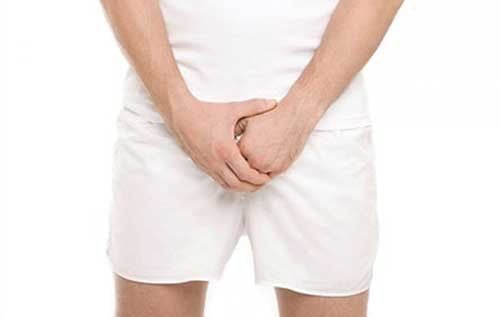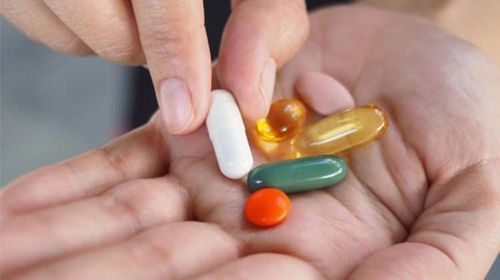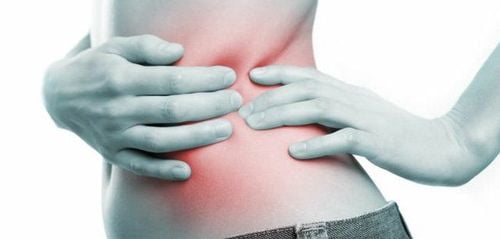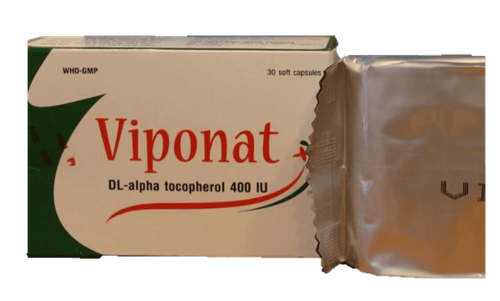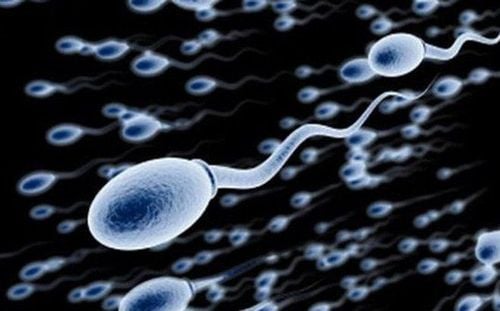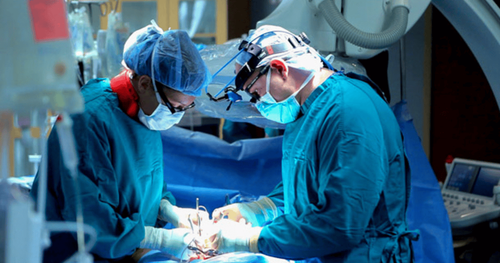This is an automatically translated article.
The article was professionally consulted by Doctor Do Thi Hoang Ha - Laboratory Department - Vinmec Hai Phong International General Hospital.
Hormonal disorders will cause significant impacts on daily activities as well as psychophysiological problems, quality of sex life and the ability to have children. Quantification of inhibin B helps assess fertility in both men and women.
1. What is Inhibin B?
Inhibin is a heterodimer hormone (heterodimeric protein hormone), consisting of two homologous subunits, an alpha subunit combined with a beta A or beta B subunit, to form two types of inhibin, respectively. A and inhibin B . Inhibin A and B are secreted by the granulosa cells of the ovary during follicular development in females and the Sertoli cells of the testes in males only secrete Inhibin B. Inhibin B is a synthetic inhibitor glycoprotein assays are heterogeneous and are more direct than other tests of ovarian function in women.2. Endocrine regulation during spermatogenesis in men
The process of sperm formation in men is regulated by reproductive hormones in the body. Spermatogenesis and testicular androgen production are regulated by the hypothalamic-pituitary-testicular axis. Factors involved in spermatogenesis include GnRH, FSH, LH, testosterone, prolactin, and inhibin B.The spermatogenesis and endocrine synthesis of the testes are regulated by the hypothalamus and pituitary gland. The hormones of the pituitary gland that play an important role in the regulation of testicular activity include LH, FSH and prolactin.
The hypothalamus secretes the hormone GnRH in a pulse pattern that stimulates the pituitary gland to synthesize and secrete FSH and LH. Just like the hypothalamus, the pituitary gland secretes these two hormones in the form of pulses. In the testes, FSH binds to receptors on the surface of Sertoli cells, stimulating sperm production. In addition, on Sertoli cells there are also testosterone receptors, both FSH and testosterone are necessary for sperm production.
Interstitial cells (Leydig cells) synthesize and secrete testosterone. In normal men, about 6 mg of testosterone is excreted every day, of which about 98% exists in 2 forms: the form bound to SHBG (Sex Hormone Binding Globulin - globulin carrying sex hormones - accounting for about 30%) and the form attached to SHBG. loosely bound to albumin (approximately 68%), only a small fraction of free testosterone and albumin bound testosterone are biologically active. The hypothalamic hormone LH stimulates Leydig cells to synthesize and secrete testosterone. These two hormones act directly and mainly on Sertoli cells and Sertoli cells play a role in coordinating spermatogenesis. Topical testosterone is responsible for stimulating sperm production. In addition, testosterone entering the blood causes a number of effects on other organs in the body that develop the biological characteristics of men (hair growth, voice changes, muscle development..). The concentration of testosterone in the lumen of the seminiferous tubules is 100 times higher than its concentration in the blood.
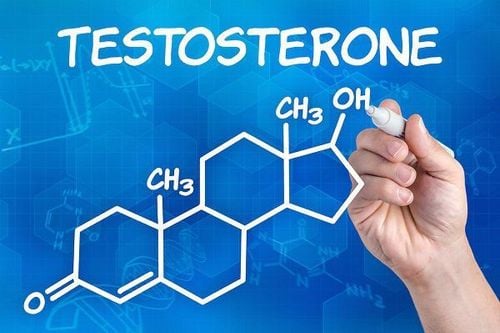
The release of LH by the pituitary gland is controlled by the concentration of testosterone in the blood by a feedback mechanism. High levels of testosterone in the blood will inhibit the hypothalamic and pituitary axis to reduce LH secretion, leading to decreased testosterone secretion by Leydig cells. Conversely, if the blood testosterone level is low, it will stimulate the hypothalamus and pituitary gland to increase LH secretion, stimulate Leydig cells to increase testosterone synthesis. Sertoli cells also secrete a number of substances that play an important role in regulating reproductive functions such as: androgen-binding protein (ABP), inhibin B. Inhibin B plays a role in regulating FSH levels and regulating some Cells involved in spermatogenesis, when sperm count is high, inhibin B is secreted and it inhibits the pituitary gland from releasing FSH and the hypothalamus from secreting GnRH. When sperm concentration is less than 20 million/ml, the secretion of inhibin B will decrease. Thus, the testosterone concentration and sperm count produced by the testes reflect the balance between the three sets of hormones: gonadotropic hormone that directly stimulates the testes to secrete testosterone, and GnRH that stimulates the testes. Indirectly, the testes by acting on the pituitary gland secrete FSH and LH, and testosterone and inhibin B act on the hypothalamus and pituitary gland by a counter-regulatory mechanism.
3. Inhibin B for women
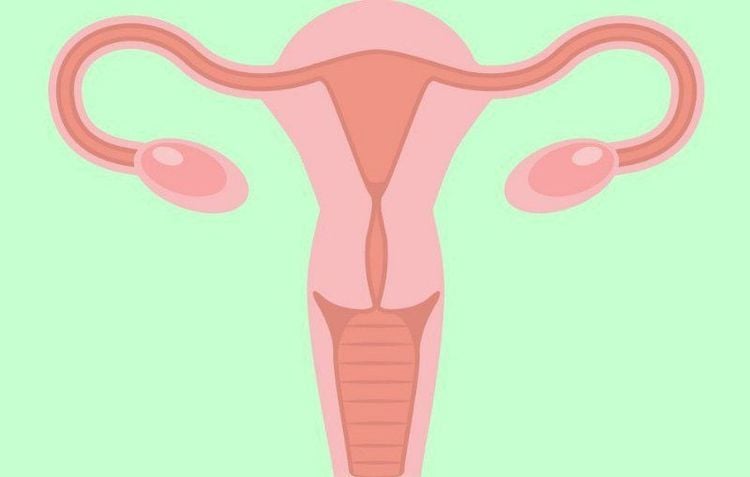
The timing of increased inhibin B levels suggests that it plays a role in follicular formation through negative feedback on FSH production. During menopause, due to the absence of follicles, serum levels of inhibin A and inhibin B are very low, or undetectable.
Inhibin A and inhibin B are used in the diagnosis of ovarian cancer. Increased serum levels of inhibin A and/or inhibin B have been observed in some patients with granulomatous tumours. Elevations in inhibin B were reported in 89% to 100% of patients, and in these patients inhibin B concentrations tended to increase up to 60 times the reference range. Inhibin B is also a suitable marker for the detection of mucinous epithelial tumours, with 55% to 60% of cases presenting with elevated inhibin B levels. However, inhibin B is not a good marker for detecting these tumors. nonmucous epithelial tumor, because it only increases in about 15% to 35% of patients. Inhibin together with CA 125 is a good set of markers for ovarian cancer detection. CA 125 is less sensitive in detecting mucinous and granulomatous tumors, so when combined they compensate for each other. Inhibin A and inhibin B should not be used in postmenopausal women because their concentrations are very low. And in premenopausal women, inhibin levels are also difficult to interpret because it varies depending on the menstrual cycle.
4. What is the effect of inhibin B quantification?

4.2 For women Inhibin B levels are increased in about 89% to 100% of patients with granulomatous tumors, and in about 55% to 60% of patients with mucinous carcinomas. A normal level of inhibin B does not rule out the possibility that the patient has an ovarian tumor, and in this case it is necessary to further check the concentration of inhibin A. In clinical practice, the role of inhibin A cannot be absolute. When confirming or denying any malignancy, serum inhibin values should be combined with other signs and results before conclusions can be drawn. In patients who have had surgery for ovarian cancer, inhibin B levels will drop to very low or undetectable levels after surgery. An increase in inhibin B levels after treatment suggests persistence, recurrence, or progression. In relapsed patients, elevations in inhibin B appeared earlier than other clinical signs. In treatment-responsive patients, inhibin B concentrations are within the normal range.
Please dial HOTLINE for more information or register for an appointment HERE. Download MyVinmec app to make appointments faster and to manage your bookings easily.





